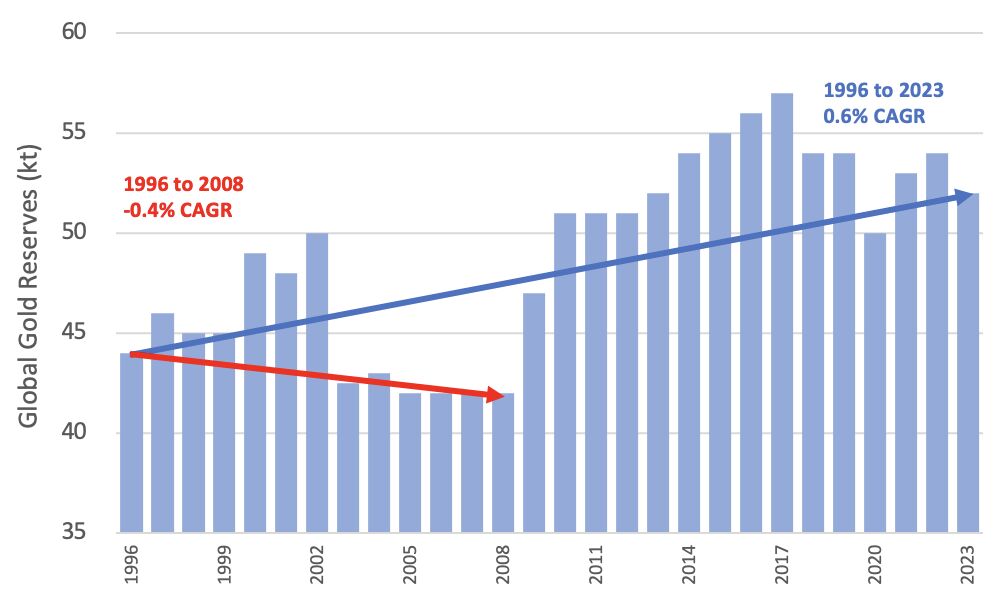Is there such a thing as “Peak Gold”? Global gold reserves have largely plateaued for 14 years, only increasing over and above what we have mined by 0.6% CAGR (since 1996). Meaning, despite significant advances in metallurgical technologies, whereby we can extract bullion from multi-element mineral deposits at lower concentrations, improved recoveries, we are barely keeping pace with current extraction rates; let alone allowing for the growth in future demand.
The reasons why global exploration efforts have been so disappointing are varied, but we believe there are three key determinants, namely:
(i) The gold price from the early 1990’s into the mid 2000’s fell ~40% in real terms. Unsurprisingly, exploration efforts in many places ceased, resulting in global reserves declining until gold prices started to climb again from Q306 onwards (hence the lag time for resource improvements first seen in 2009), thereby confirming the “Law of Supply”.
(ii) It is getting increasingly harder to find new gold deposits (i.e. discovery depletion) and the remaining most prospective regions are still under the influence of significant geopolitical considerations. What remains then, are typically of a poorer quality than current large operating gold mines. Replenishing its resource base was, in large part, why Newmont took over Newcrest Mining.
(iii) Arguably, in the long-term, the exploitation of a non-renewable resource (i.e. gold) will result in physical mineral depletion. If that depletion continues unchecked (i.e. we are struggling to find enough gold to replace what we are mining) while other economic and technological conditions remain the same, resource scarcity and the cost of mineral production will increase, causing real bullion prices to rise.
It is this last point, where we think increased economic scarcity will result in gold values continuing to outperform inflation (in real terms) well into the foreseeable future.

